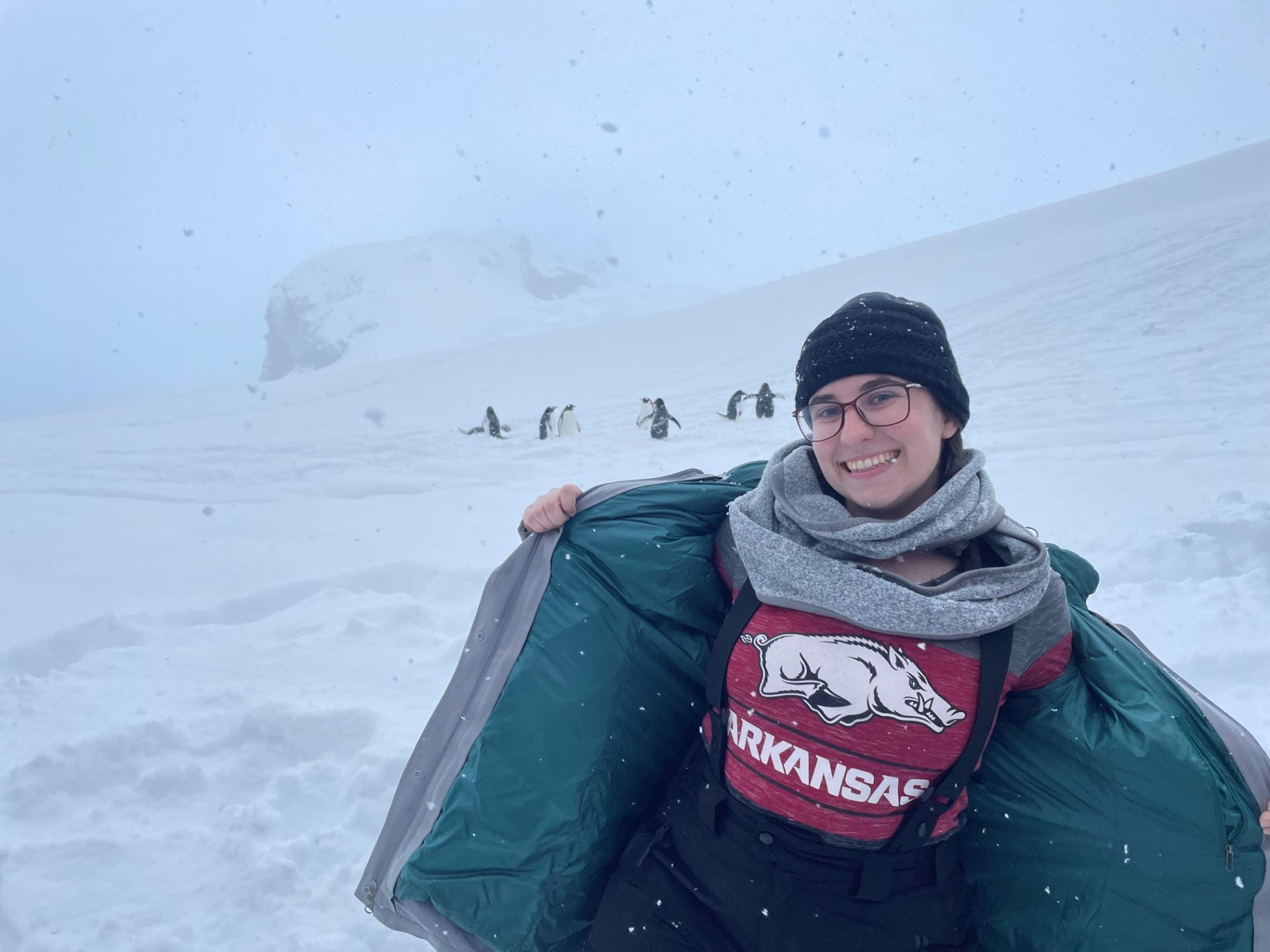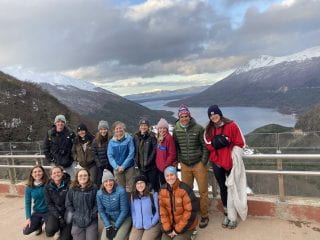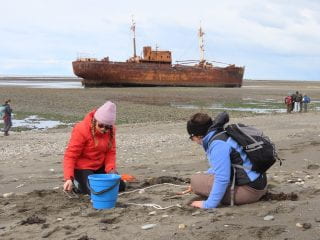 |
Once Zoe Pitman (B.A. earth science, cum laude, ’23) discovered that students had not yet studied abroad in Antarctica, she knew she wanted to try. After years of research and applications, Pitman moved for a semester to Argentina (the gateway to the Drake Passage) to fulfill her dream and learn about climate change. In Argentina, Pitman was immersed in a new language, and the semester proved to be her most challenging. Her perseverance paid off – a week after her birthday, she was aboard an excursion to uncharted academic opportunities in the polar desert.
During my freshman orientation, I learned that students from the University of Arkansas had studied abroad in every continent except for Antarctica. That was the day that I knew I had to find a way to study abroad in Antarctica. The next three years were full of searching, applications, and cancellations, but in 2022, I finally traveled to Argentina to begin the most challenging and rewarding semester of my college career.
During my freshman orientation, I learned that students from the University of Arkansas had studied abroad in every continent except for Antarctica. That was the day that I knew I had to find a way to study abroad in Antarctica. The next three years were full of searching, applications, and cancellations, but in 2022, I finally traveled to Argentina to begin the most challenging and rewarding semester of my college career.
 |
| Zoe studied and researched alongside 14 other students. |
Ushuaia, Tierra del Fuego, Argentina is the southernmost city in the world and a gateway to Antarctica. I spent a semester living and studying in Ushuaia with the School for International Training study abroad program People, Environment, and Climate Change in Patagonia and Antarctica.
When I arrived in Ushuaia, I was immediately immersed in Spanish. My host family did not speak English, and all of my classes were in Spanish. At first, it was overwhelming, and I worried I would never fully understand. After about a month, I realized that I could speak complete sentences and understand most of what people were saying. By the end of the program, I was engaging in full conversations and even translating between my host family and my family, who came to visit me for a few weeks after the program ended.
The program included a full 16-hour schedule of classes on climate change, ecology, research methods, local history and Spanish for the natural sciences. The material in the classes was generally easy, but everything was taught in Spanish, so the semester ended up being harder than any other semester at the U of A. The program directors taught most of our classes, bringing in guest lecturers weekly to cover a wider range of material. There were only 14 students in the program, so the smaller class size made it easier to ask questions and interact with the lecturers. The last part of the semester was an independent study project where each student had the opportunity to work with a local scientist on a unique research project. I studied the impact of precipitation changes due to climate change in Ushuaia, and I learned a lot about how to conduct research. The classes and independent study were really beneficial to me because I would like to go into climate research as my career.
 |
| Students visit a local scout group in Tierra del Fuego to participate in a research project on microplastics. |
Ushuaia is a beautiful city surrounded by mountains on one side and the ocean on the other. I went on a lot of hikes with my classmates and saw some amazing views. It was incredible to see the differences and similarities in the environment surrounding Ushuaia from the environment that I was familiar with. The locals in Ushuaia are very friendly and love to hike, so we got to meet many great people on our hikes, and they were always willing to help us practice our Spanish or teach us something about the area.
During the program, we got to go on three excursions as a group. The first excursion was Rio Grande, another city in Tierra del Fuego where we visited a local scout group and did a research project on microplastics. The second excursion was to Estancia Harberton, the oldest European settlement in Tierra del Fuego. The final excursion and the reason that I chose this program was to Antarctica. On November 3rd, we boarded the MV Ushuaia, a former research ship that had been converted into a small Antarctic cruise ship. We began our two-day journey across the Drake Passage, known as the roughest waters in the world. On November 5th, my birthday, we were set to arrive in Antarctica in the afternoon. Around noon, the crew gathered all the passengers in the ship’s bar to announce that a passenger had been injured, and we had to turn around. The runway in Antarctica was too icy for planes and the weather was too bad for helicopters, so the only way to evacuate the passenger would be to return to Ushuaia. We would not be going to Antarctica. I was devastated. I had been trying to get to Antarctica for three years, and I was so close to making it. I understood that it was necessary to evacuate the passenger and that it was the only option, but it was still a hard day. We turned around without ever having reached land and spent another two days on the Drake.
About a week after we arrived back in Ushuaia, our director contacted us with amazing news. The School for International Training had approved their request to let us get on the next trip to Antarctica. On November 21st, we left to cross the Drake Passage a third time. This time we actually made it to Antarctica. We saw breathtaking landscapes and some of the most amazing wildlife I have ever seen. We visited the Almarante Brown Antarctic base on our last day, an actual continental landing where I got to step foot on Antarctica.
I absolutely recommend this program to other students who are interested in climate change or environmental science. I would advise other students not to give up on going on their dream study abroad program because it’s worth it in the end. This program was indeed one of the best experiences of my life, and I will remember it forever.
